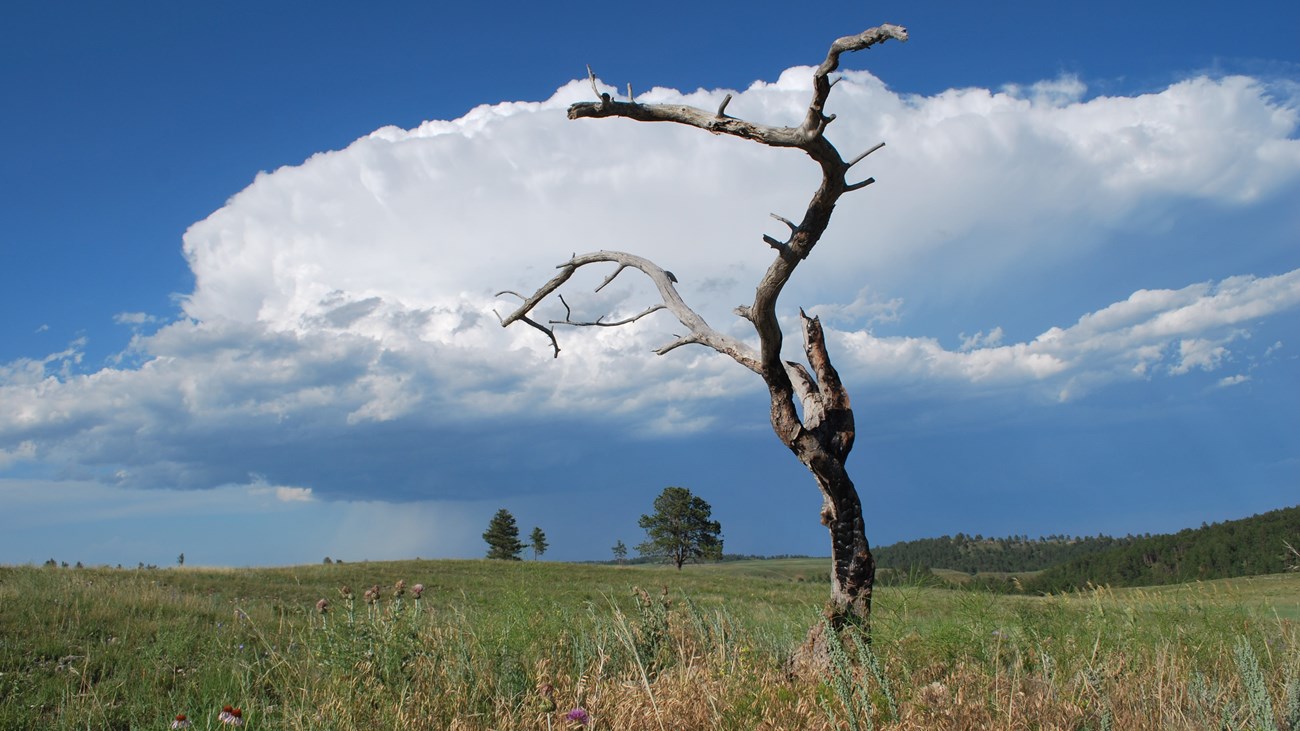
NPS Photo Island in the Sea of GrassThe Black Hills are sometimes described as an island rising within a sea of grass. This sudden rise in elevation and the resulting slopes and exposures produce a much different climate than the surrounding plains. Wind Cave National Park lies on the southern tip of the "island" and, like the rest of the southern hills, has weather patterns that are greatly influenced by the Rocky Mountains to the west and the higher peaks of the northern Black Hills. Generally, the climate is semi-arid with mild winters and warm summers. Seasonal WeatherWind Cave National Park and the southern Black Hills are generally warmer and drier than the northern hills. Winter snowfall averages 30 inches annually. Spring and fall days vary from sunny and warm to cool, rainy, and windy. Summer brings warm daytime temperatures with cool evenings. Severe thunderstorms are common in June and July and can produce large hail and severe lightning. Slow moving storms can dump large amounts of rain over a small area, leading to flash flooding. Be cautious when camping near a creek bed even if it is dry. Move uphill if flooding starts. Be sure to check the local forecast and current road conditions before heading out. Wind Cave Weather AveragesHigh temperature: 37° F
Low temperature: 11° F Precipitation: 0.4 in Snowfall: 6.6 in High temperature: 42° F
Low temperature: 15° F Precipitation: 0.6 in Snowfall: 5.9 in High temperature: 50° F
Low temperature: 21° F Precipitation: 0.9 in Snowfall: 7.4 in High temperature: 61° F
Low temperature: 32° F Precipitation: 1.8 in High temperature: 71° F
Low temperature: 42° F Precipitation: 2.9 in High temperature: 81° F
Low temperature: 51° F Precipitation: 3.05 in High temperature: 89° F
Low temperature: 57° F Precipitation: 2.3 in High temperature: 88° F
Low temperature: 55° F Precipitation: 1.8 in High temperature: 78° F
Low temperature: 45° F Precipitation: 1.2 in High temperature: 66° F
Low temperature: 34° F Precipitation: 1 in High temperature: 50° F
Low temperature: 23° F Precipitation: 0.5 in High temperature: 40° F
Low temperature: 14° F Precipitation: 0.5 in Snowfall: 6 in |
Last updated: January 5, 2025
